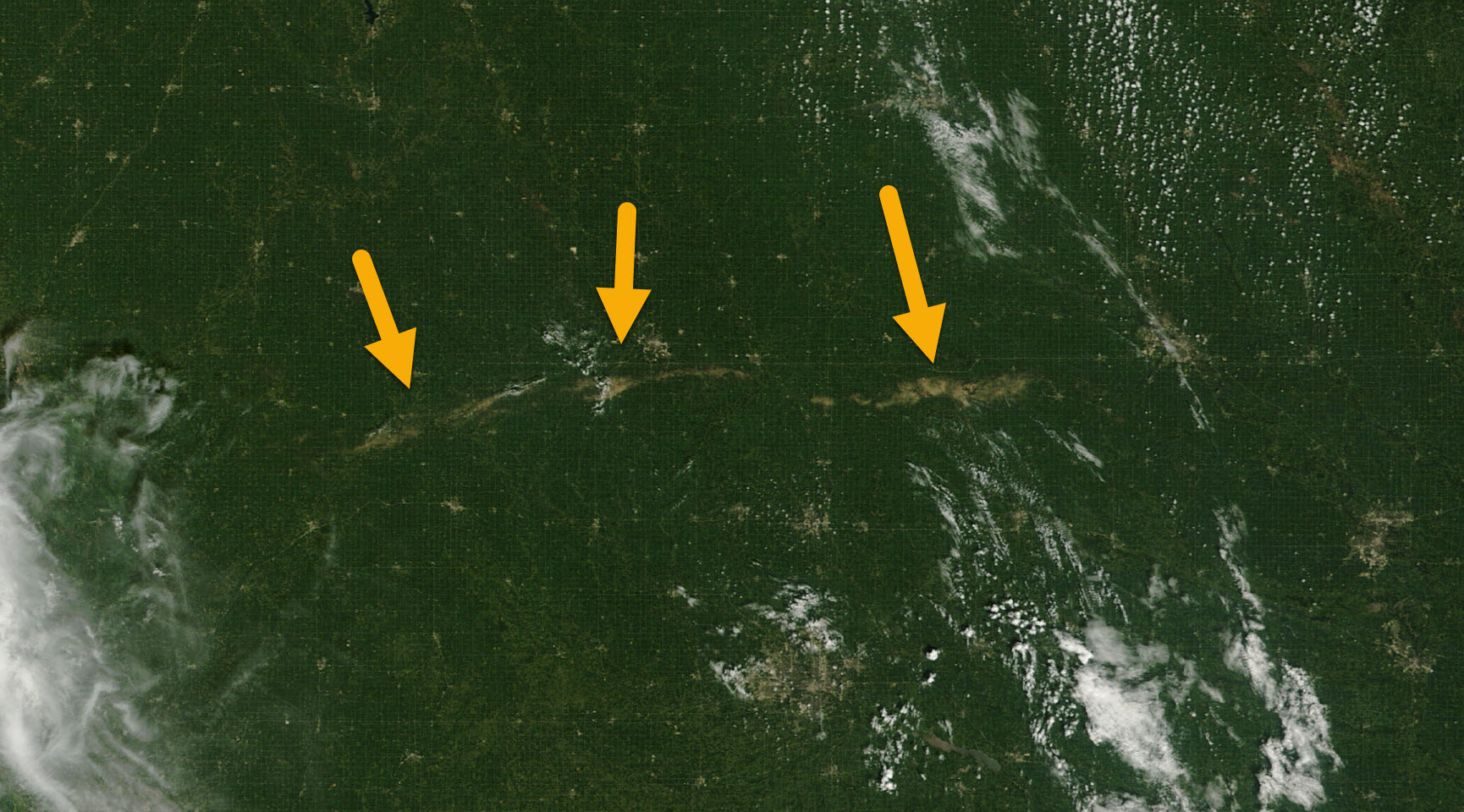
Overview
|
On the morning of August 9, 2009, an impressive supercell thunderstorm rolled across northern Iowa leaving roughly a 150-mile path of destruction that folks still talk about today. The storm began in west-central Iowa and quickly produced baseball size hail at 8:18 a.m. CT in Wall Lake, Iowa. This is somewhat unconventional given the time of day as strong storms of this nature typically develop during the peak heating of the day. Not long after the baseball hail, 75 mph winds (with the large hail) destroyed crops and broke many windows in and around the town of Somers, Iowa. Further east, an amazing video caught this wind-driven hail in Otho, Iowa. A 2-mile wide swath of hail damage to crops was found near Interstate 35 north of Ellsworth and that wasn’t even the strongest part of the storm. The photo at the bottom right was taken shortly after the storm near Callender, Iowa (south of Fort Dodge). Between 10:30 and 10:30 a.m. CDT, 102 mph winds were measured in Eldora with hail up to 3 inches in diameter! This combination caused devastating damage to every home in town and any vehicle not in a garage as well as severe tree and crop damage near Eldora. Prior to the storm, the corn was 6 feet tall and the beans were fully mature but were both completely shredded. Just northeast of Eldora, Pine Lake State Park received considerable amount of tree, building, and vehicle damage throughout the park (See image on the top right). The hail damage path was clearly visible from the air (See center image to the right). Speaking of viewing the damage from the air, MODIS (Moderate Resolution Imaging Spectroradiometer) took some amazing images from space. MODIS is aboard NASA’s Aqua and Terra satellites which are part of the Earth Observing System (EOS) program by NASA. These NASA satellites are polar orbiting satellites (polar vs geostationary) and the Terra and Aqua captured the crop damage swath across northern Iowa (See Figures 3 & 4). 45,000 acres of crops were deemed completely lost while 60% or greater loss of crops occurred on another 55,000 acres. In Hardin County alone, a 150 square mile area had substantial crop damage. The total estimated damage to crops were over $175 million across northern Iowa and 8 counties were declared a federal disaster area. Damage to the homes and vehicles in the town of Eldora were greater than the EF-5 tornado that struck Parkersburg in 2008. Wind-driven hail storms can and do produce catastrophic damage and in some cases even worse damage than tornadoes.
|
|
Photos:
A few photos from Eldora, Iowa and other locations that were hit by the large hail and damaging winds.
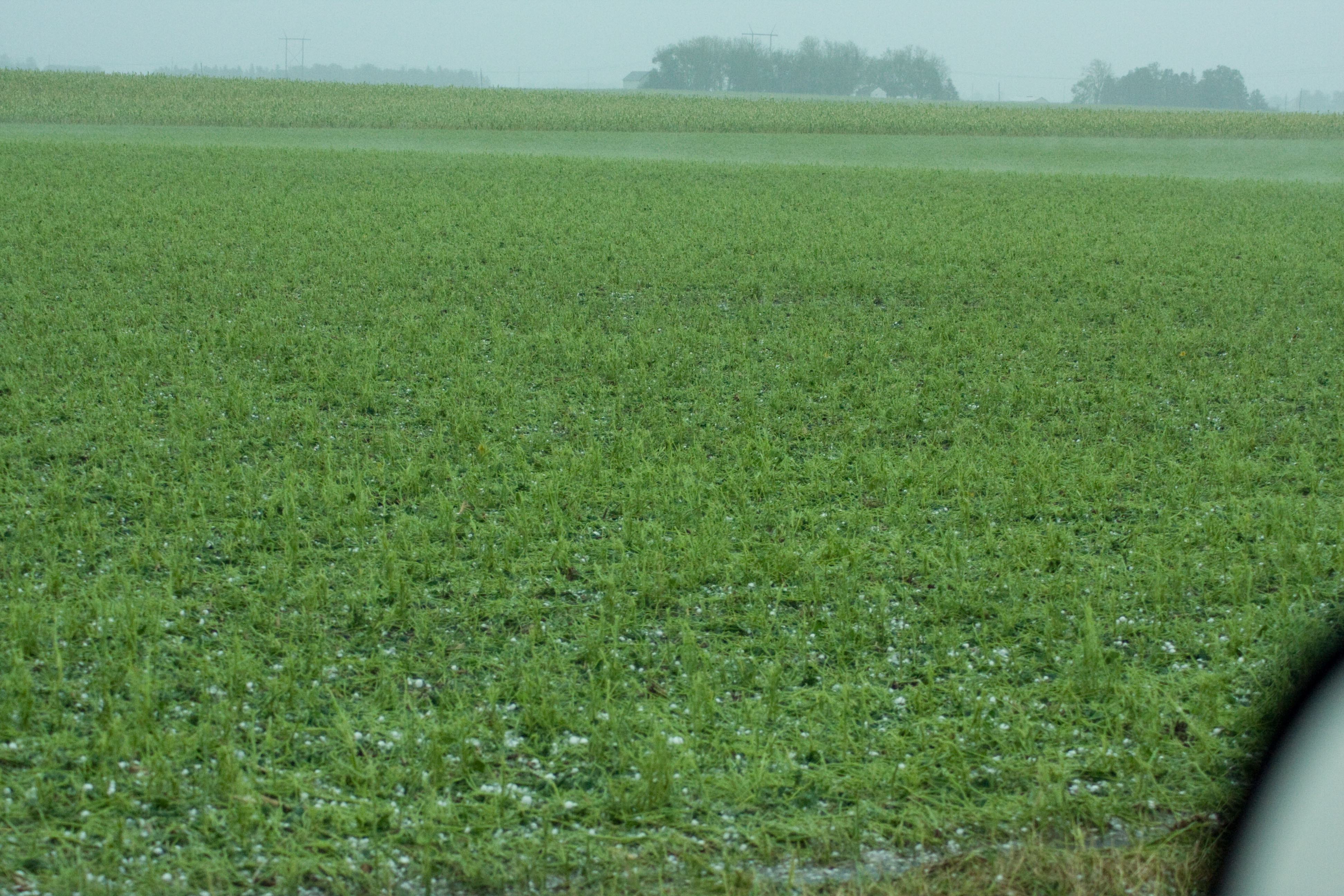 |
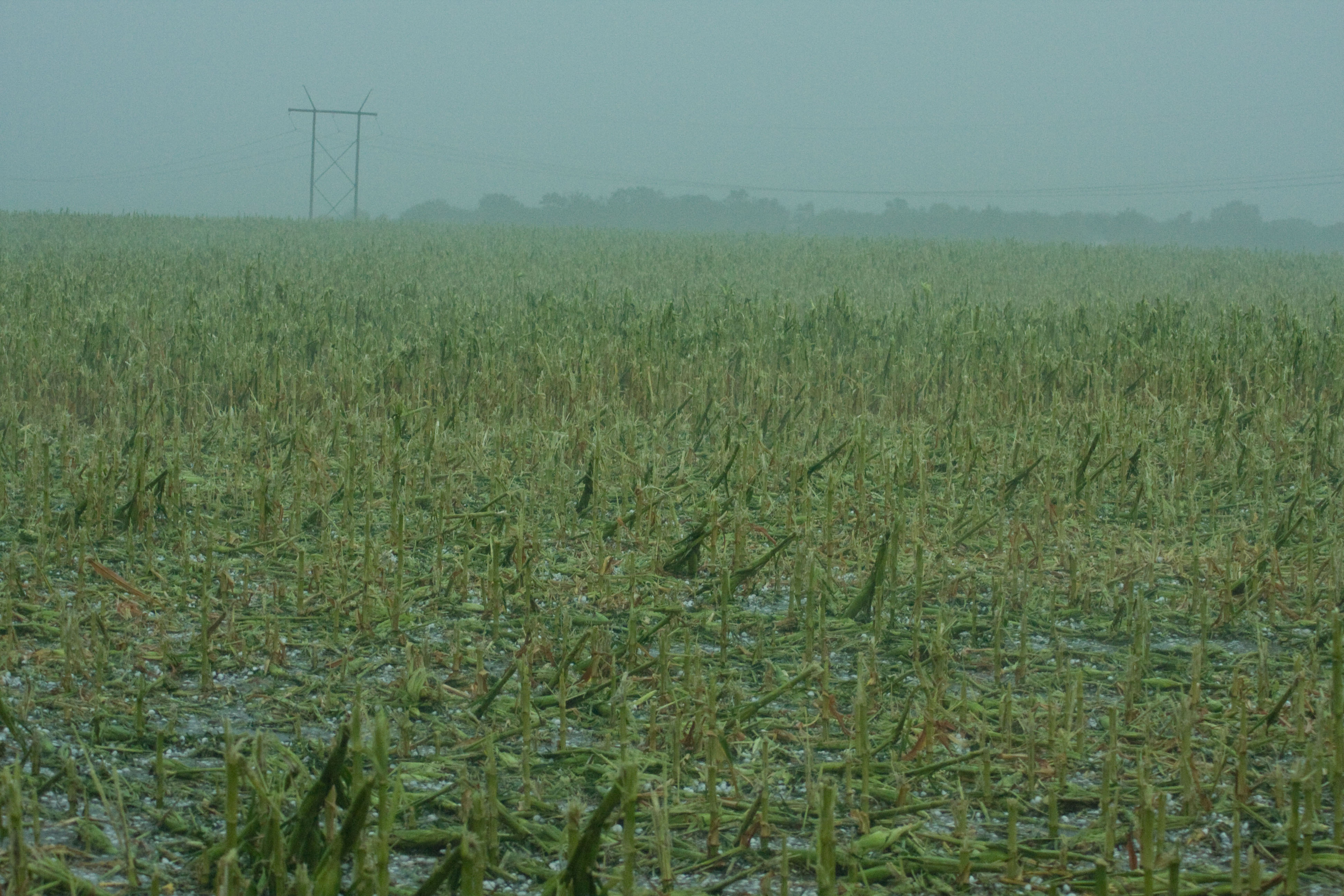 |
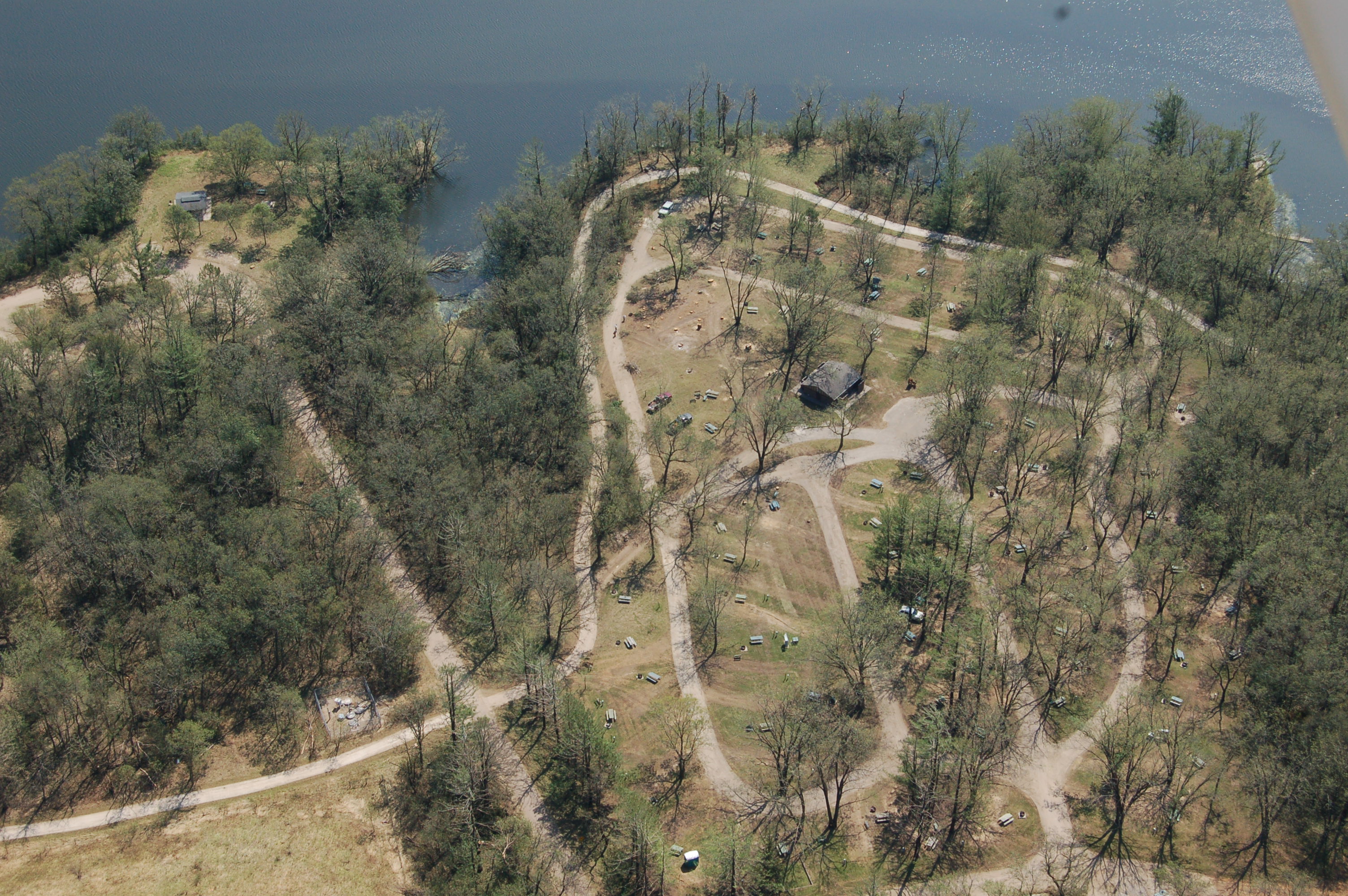 |
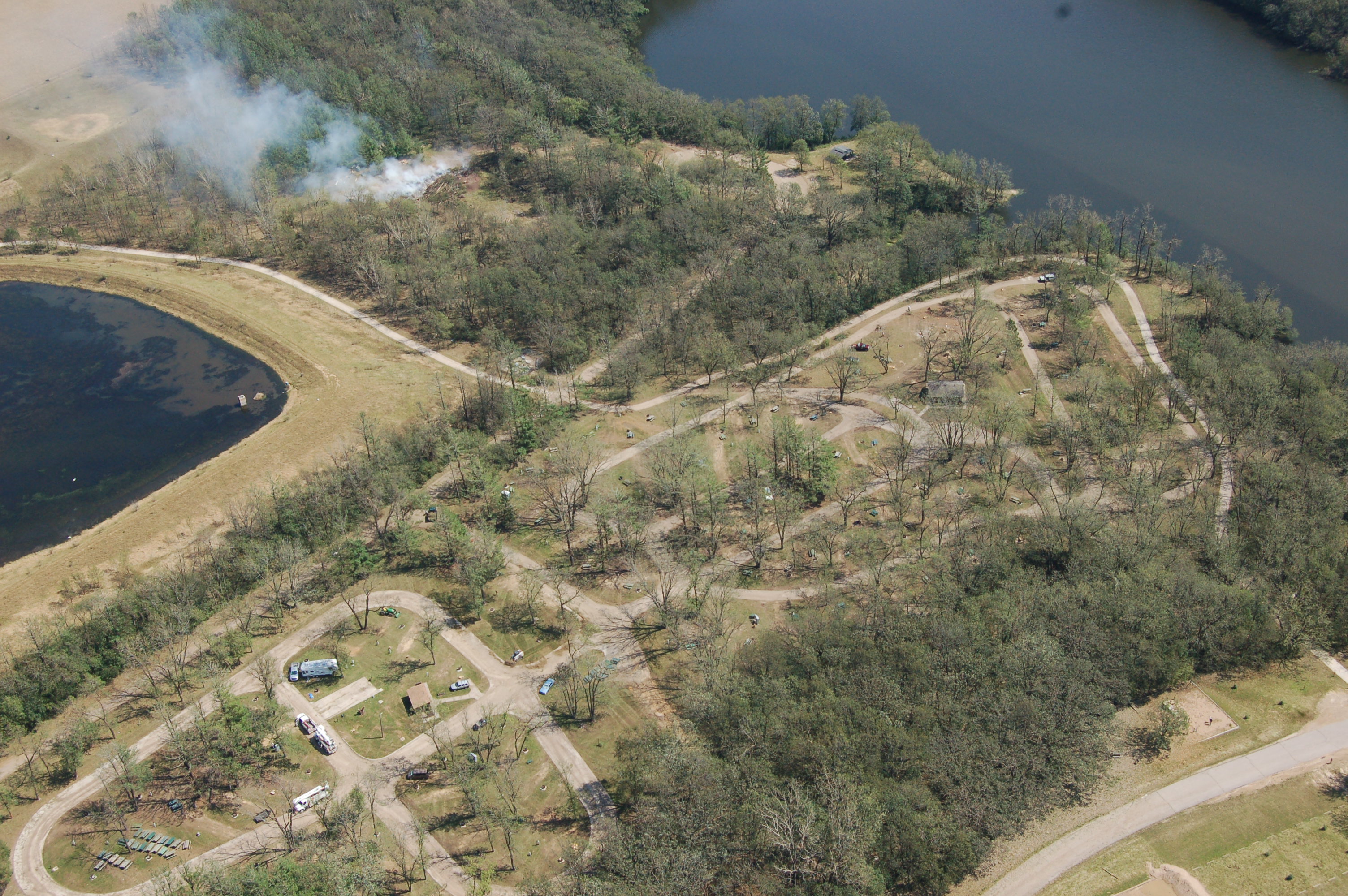 |
| Bean field near Callendar, Iowa. | Brick building with partial wall collapse in Marshalltown | Pine Lake State Park just northeast of Eldora, Iowa | Pine Lake State Park just northeast of Eldora, Iowa |
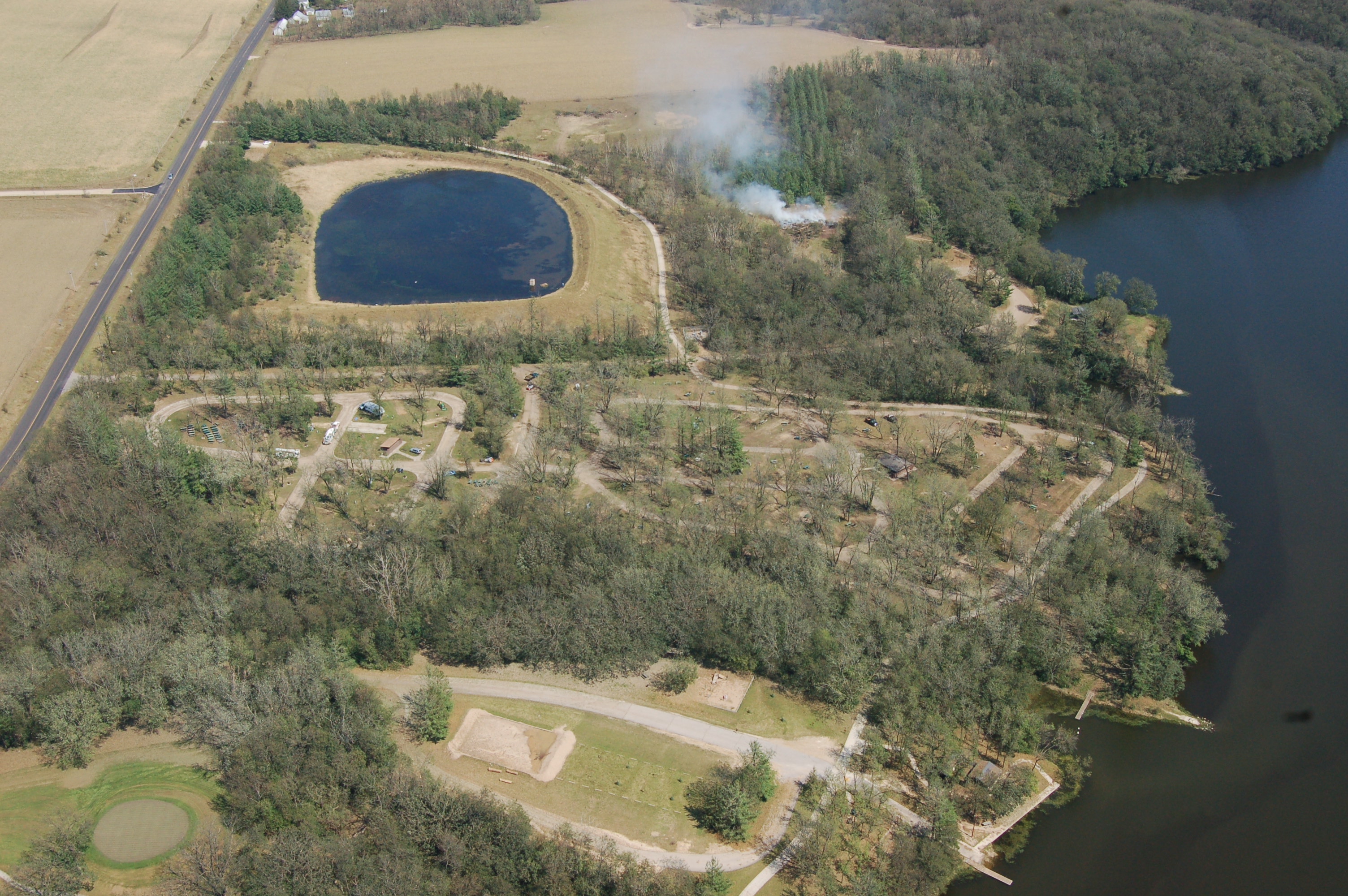 |
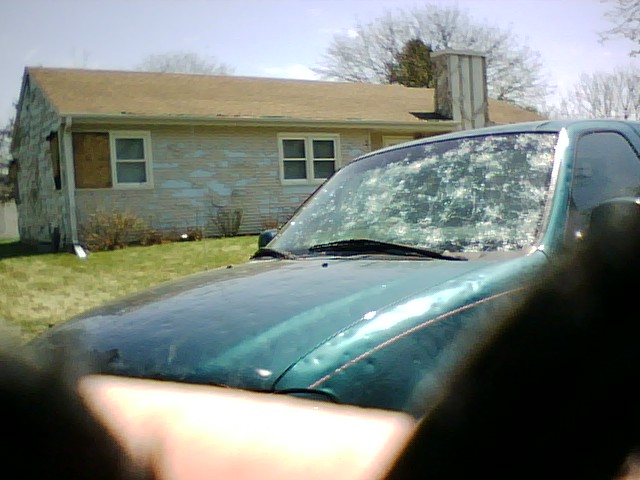 |
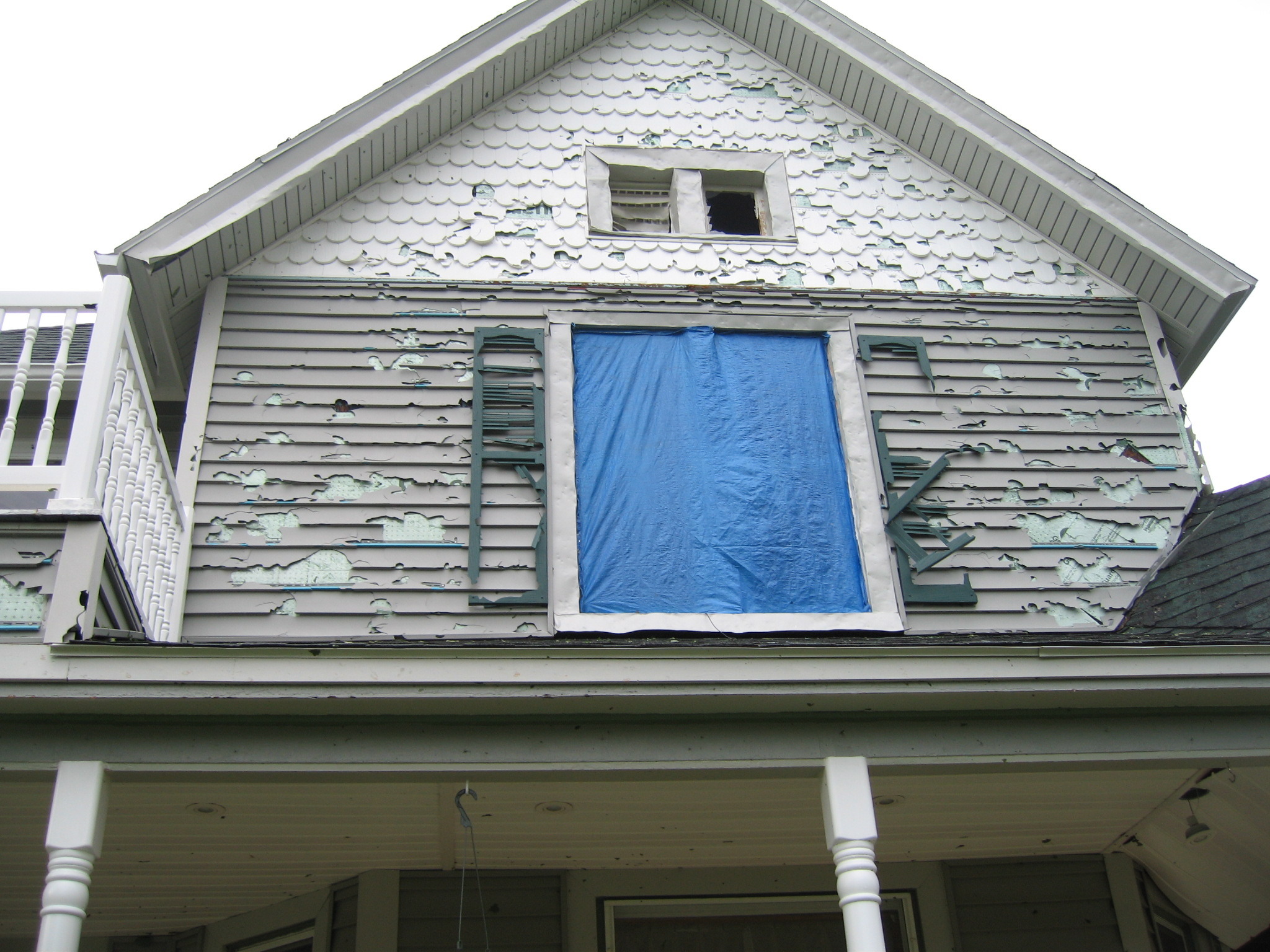 |
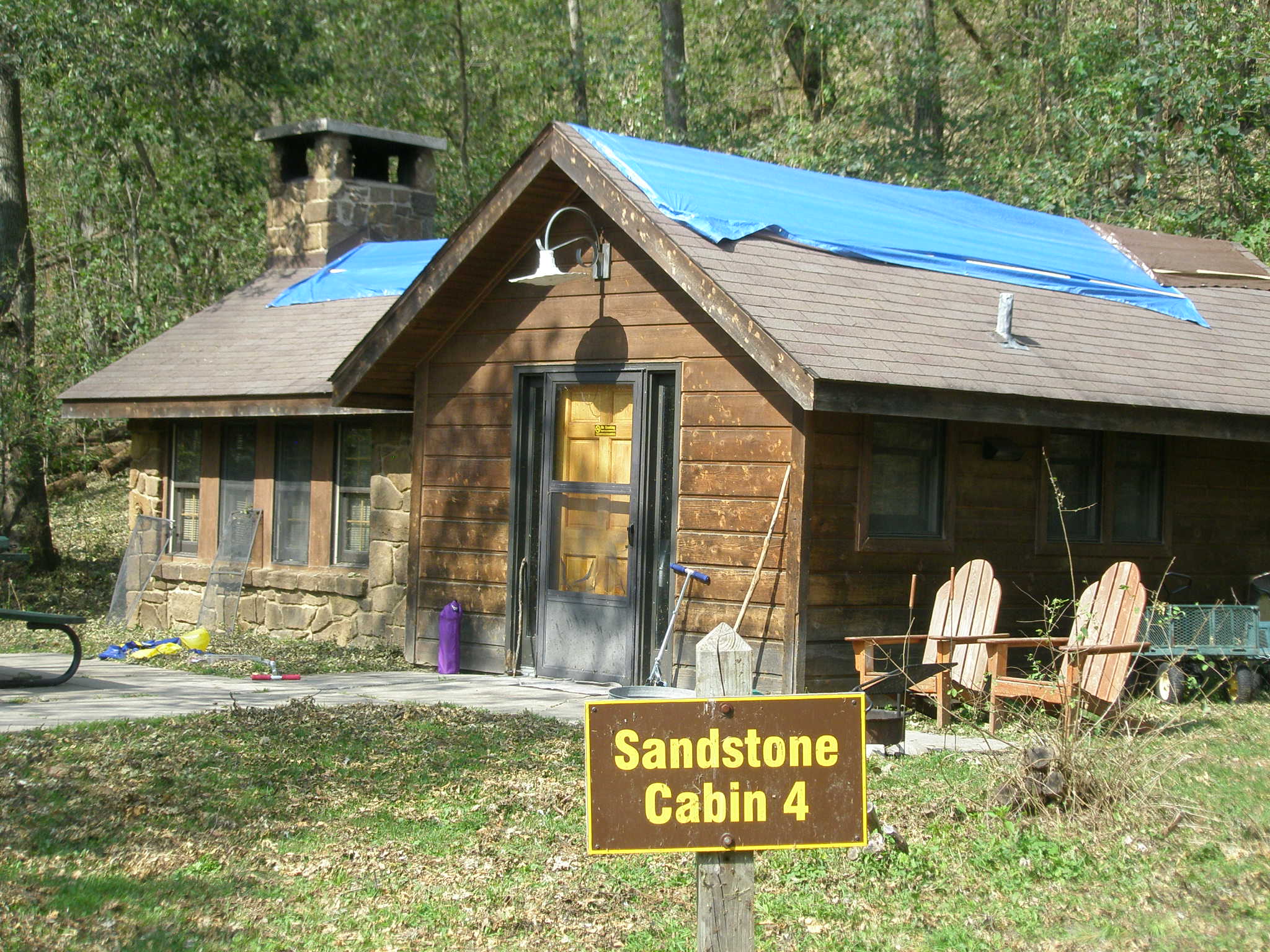 |
| Another aerial view of Pine Lake State Park. Pine Lake State Park photos courtesy of Don Primus. | Damaged home and vehicle in Eldora, Iowa. | Siding rip off home in Eldora, Iowa | Cabin with major hail damage in Pine Lake State Park. |
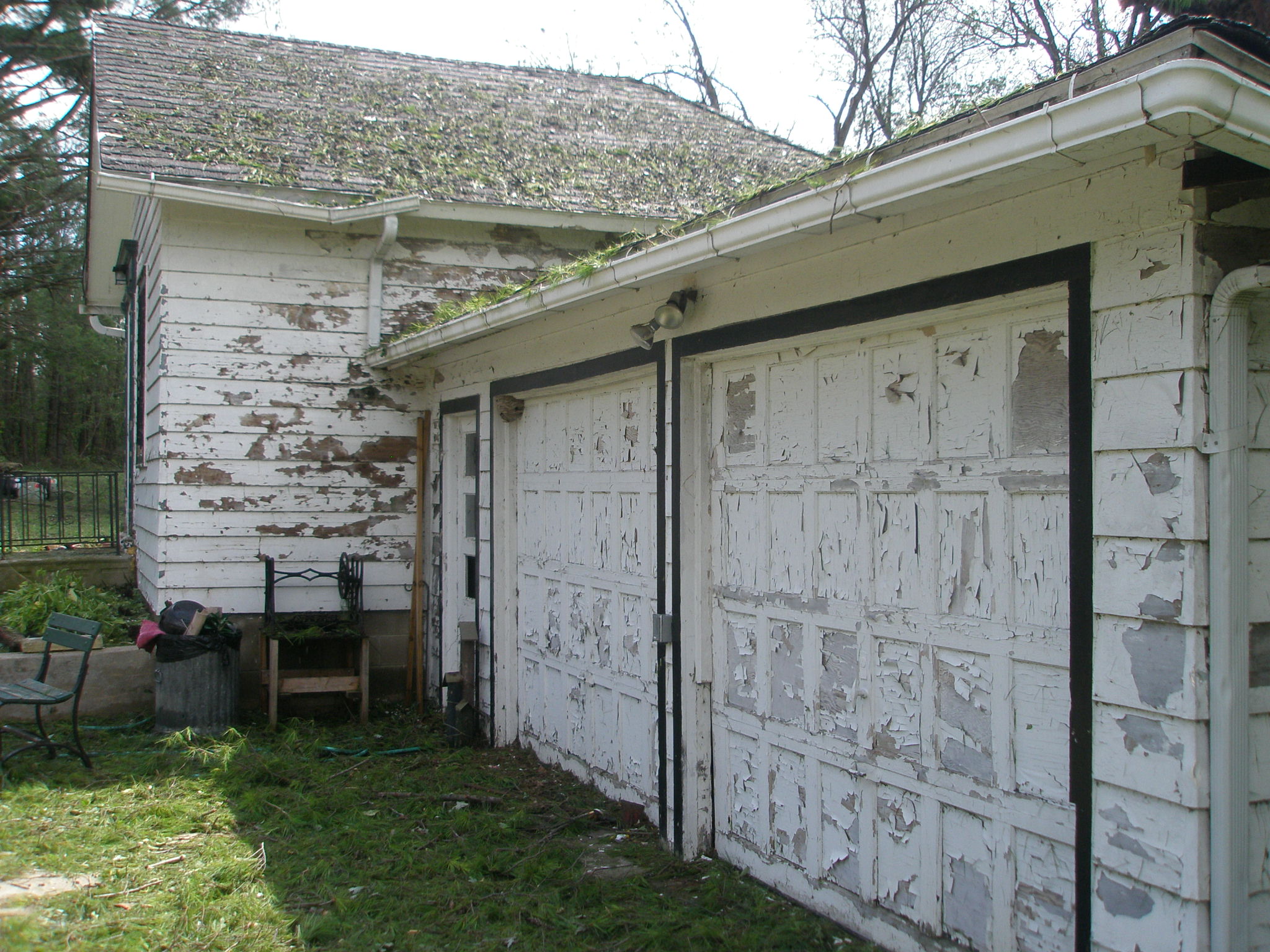 |
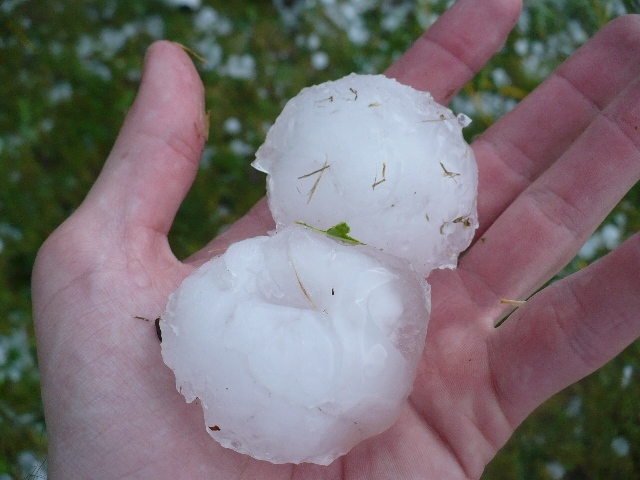 |
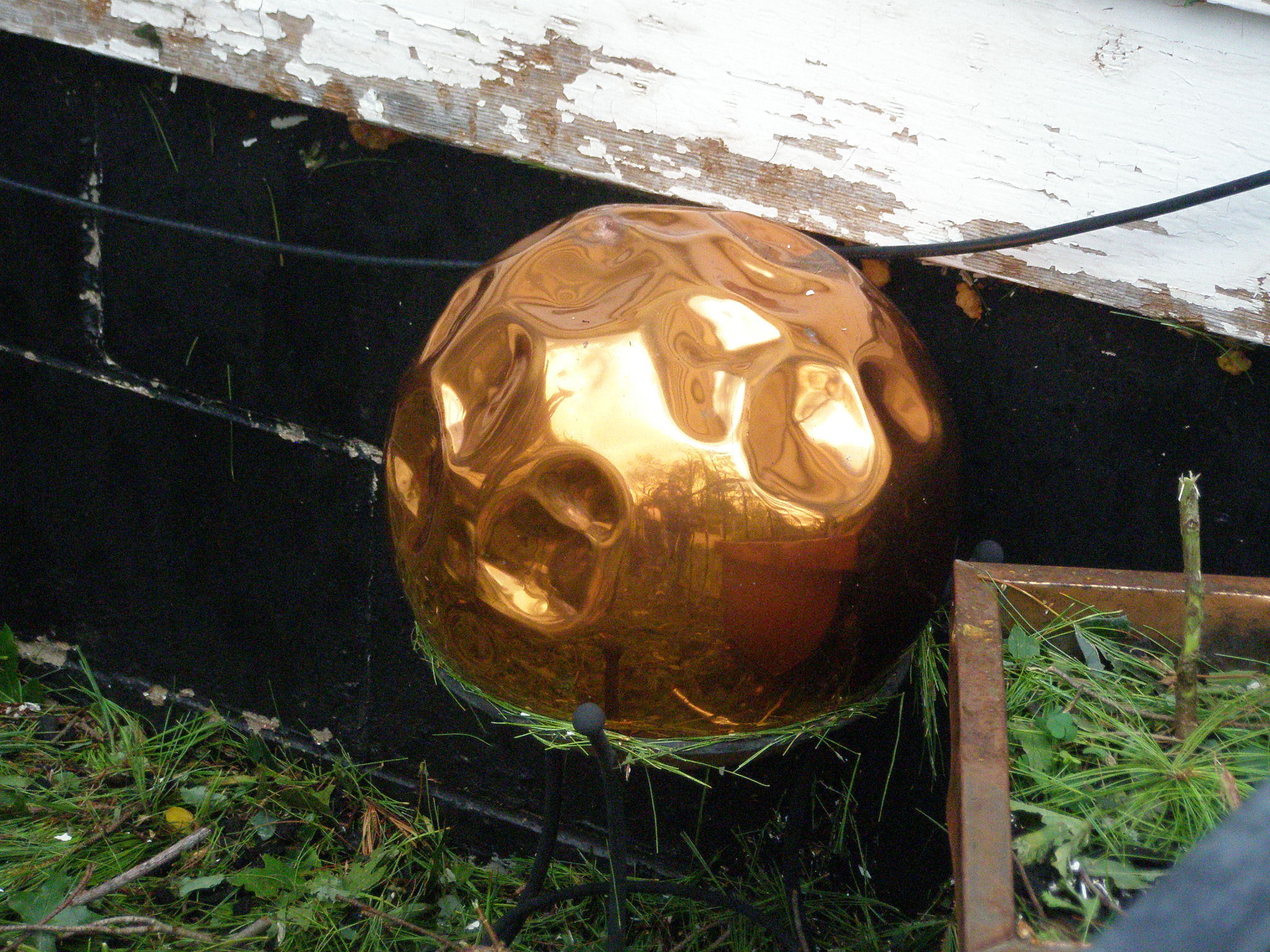 |
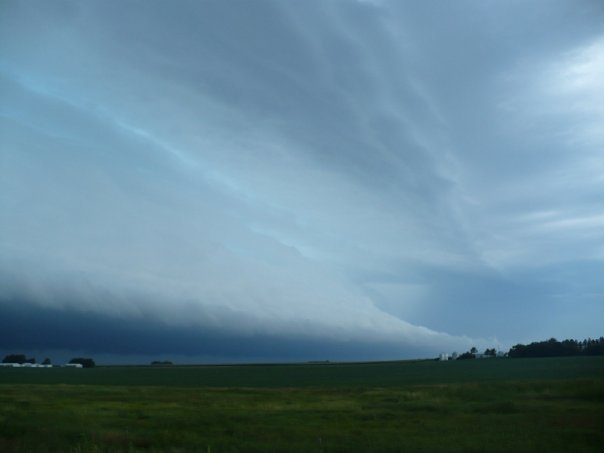 |
| More siding ripped off building in Pine Lake State Park. | Large hail from the storm. | Large hail impressions. Taken in Pine Lake State Park. | Impressive shelf cloud near Eldora. Photo courtesy of Craig Maire. |
Radar:
Radar images of the supercell that tracked across northern Iowa from around Wall Lake to Eldora, Iowa on August 9, 2009.
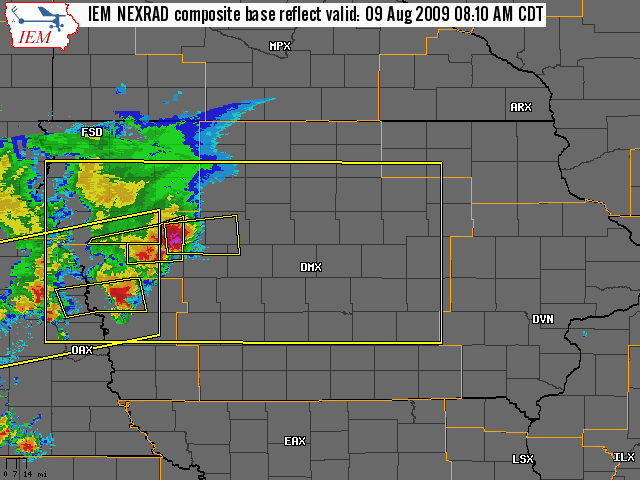 |
.png) |
|
Loop with warnings and reports |
Cross-section of reflectivity when the storm was over Eldora, Iowa at 10:42 a.m. CT. The purples and whites indicate the hail core and very strong updraft. |
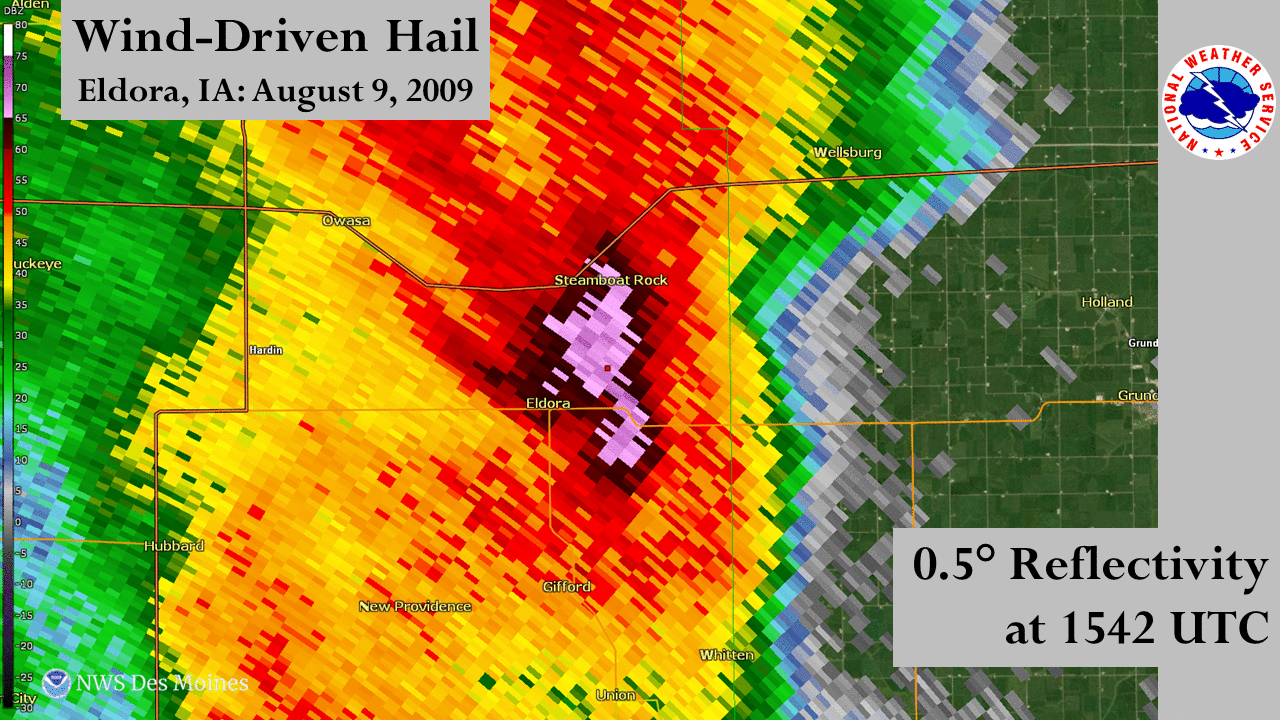 |
|
|
Base reflectivity loop beginning at 7:31 a.m. CT to 11:38 a.m. CT |
This is an 'All-tilts' loop when the storm rolled through Eldora, Iowa. The little red dot is the Pine Lake State Park. The radar samples the atmosphere by tilting the antenna slightly upward after each complete rotation. Thus, the radar is sampling the storm vertically through the atmosphere. The top of the storm as sampled by the 12.5° angle is around 70,000 feet. |
|
Base reflectivity of the storm beginning at 1300 UTC (8 a.m. CT) and ending at 1625 UTC (11:25 a.m. CT). The white outline is the crop damage from the wind-driven hail. Pink = 65 dBZ and White = 75 dBZ |
This is the Maximum Estimated Hail Size (MEHS) of the storm as it rolled through Eldora, Iowa. Notice the whites are 4 to 5 inch estimated hails size. |
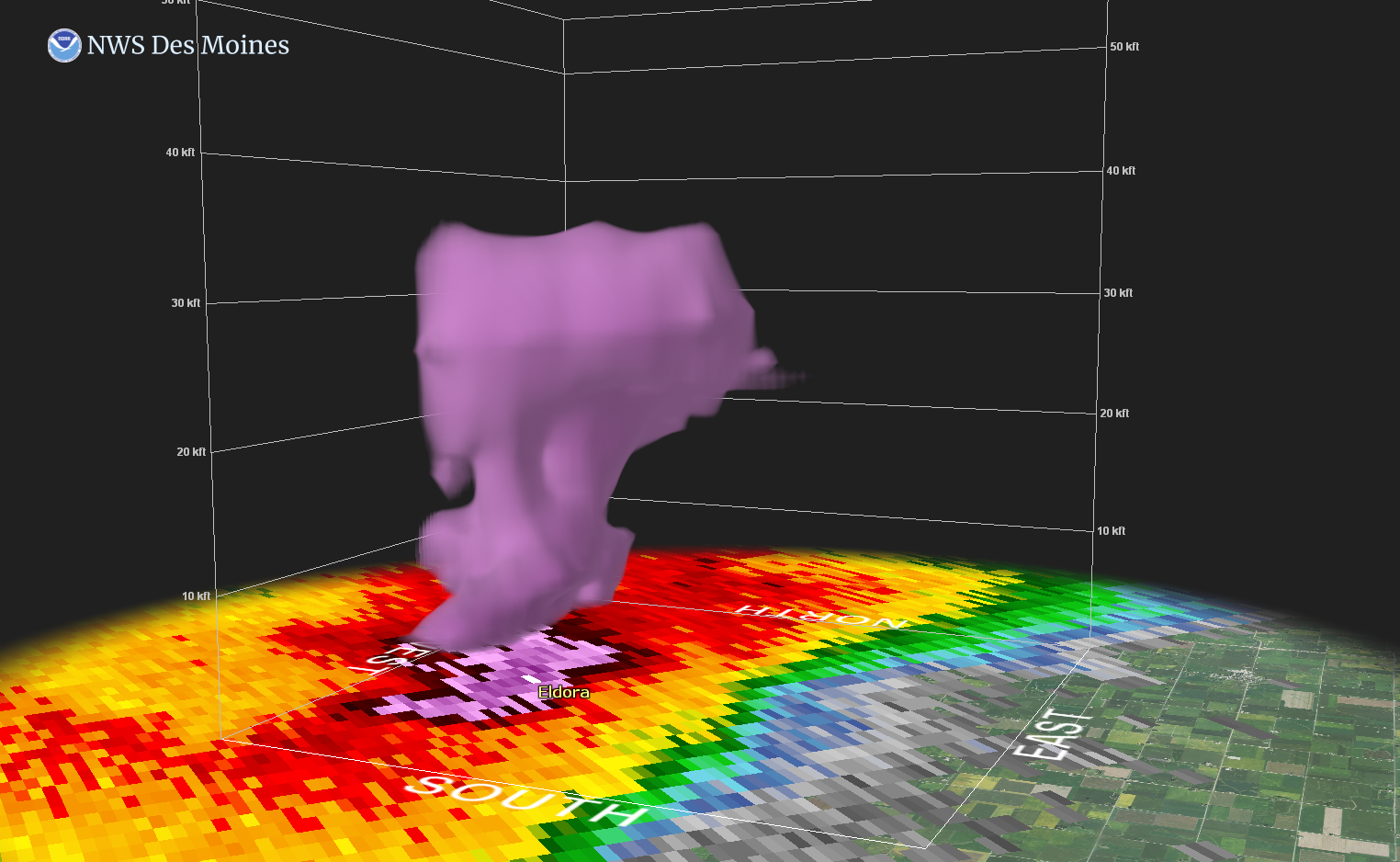 |
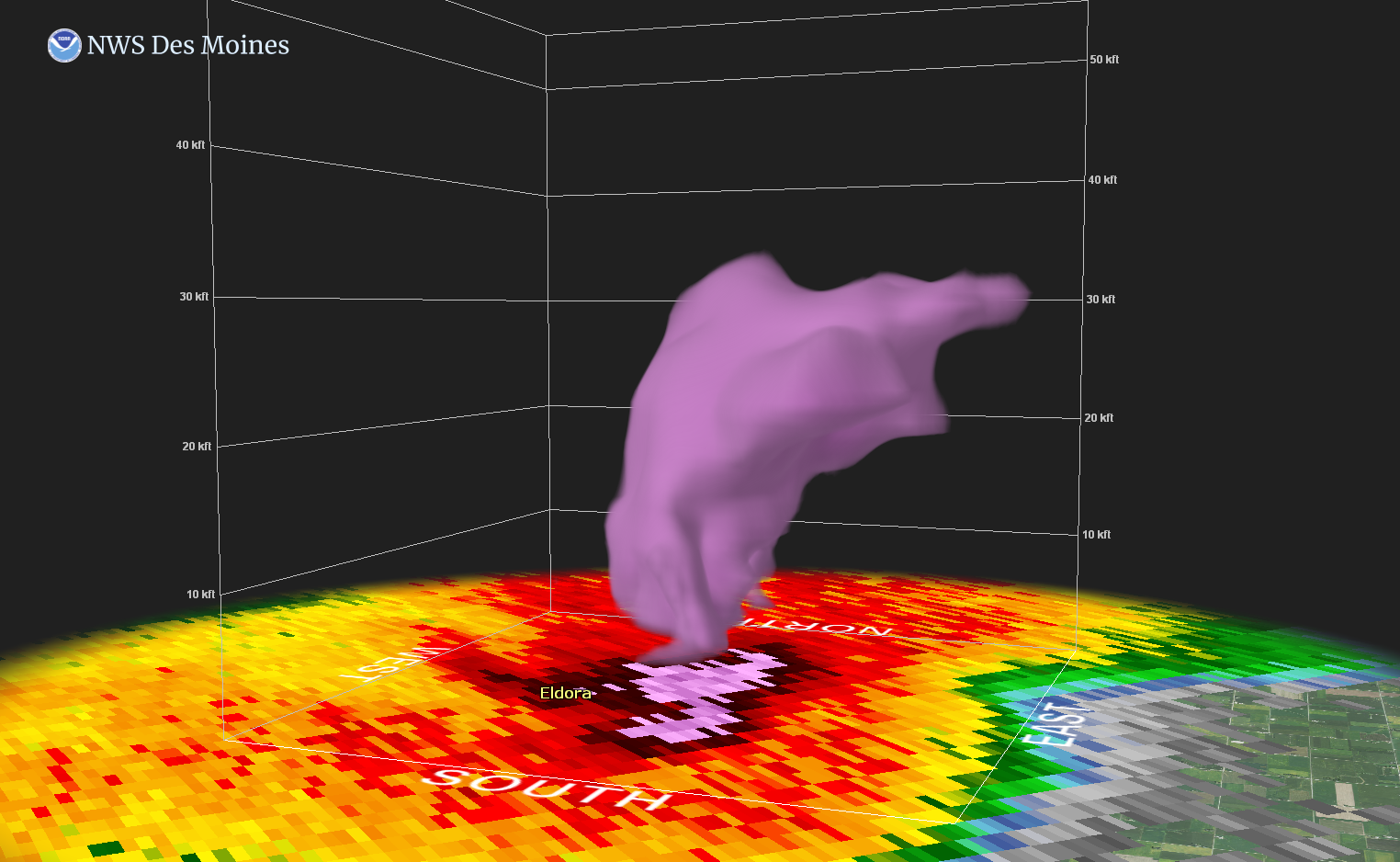 |
|
Volumtric look at the storm as it entered Eldora at 10:37 a.m. CT. |
Volumetric look at the storm as it went thru Eldora at 10:42 a.m. CT. |
Satellite
Satellite images capture from MODIS via the TERRA and AQUA NASA satellites.
 |
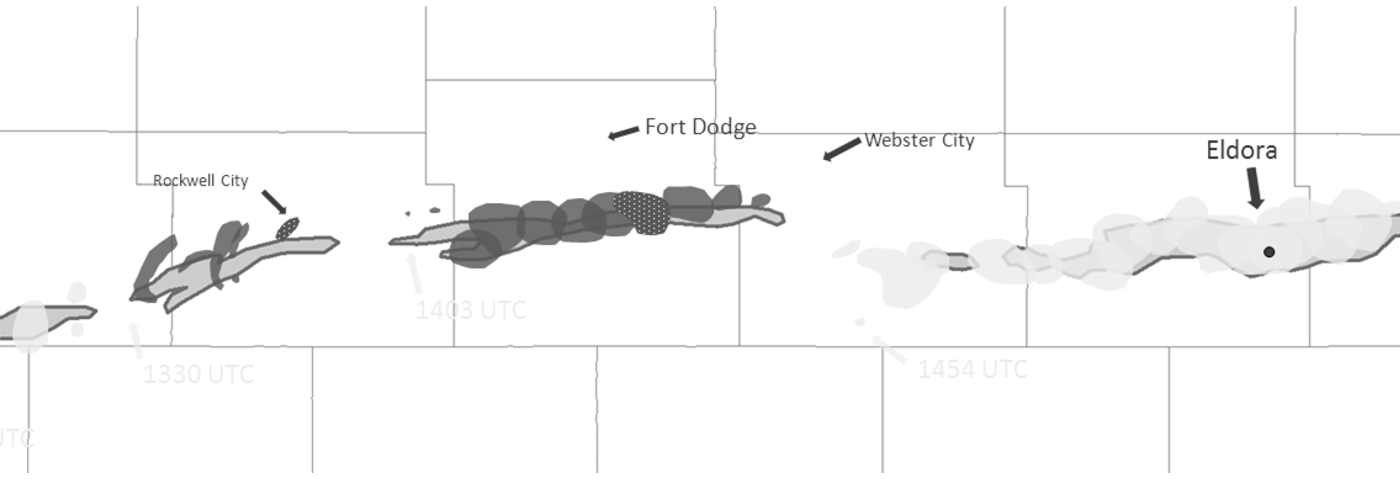 |
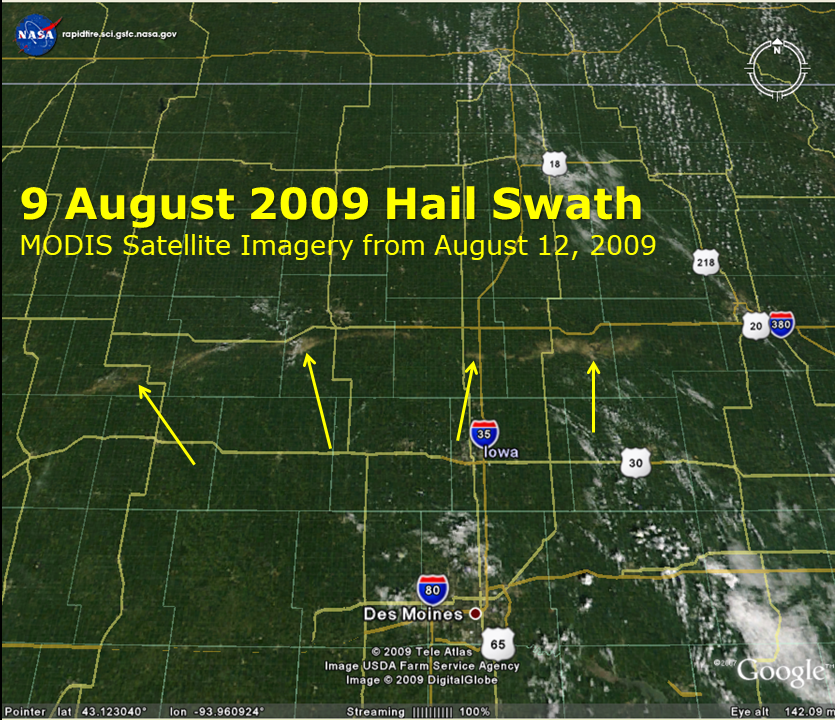 |
|
The massive hail swath captured from NASA's Terra Satellite shows the devastating crop damage over portions of northern Iowa. Eldora, Iowa is in the center of the 3rd swath (far right arrow). |
Map of the hail swath across northern Iowa. |
Another satellite image showing the massive hail swath across northern Iowa. |
Storm Reports
PRELIMINARY LOCAL STORM REPORT...SUMMARY NATIONAL WEATHER SERVICE DES MOINES IA 144 PM CDT SUN AUG 09 2009 ..TIME... ...EVENT... ...CITY LOCATION... ...LAT.LON... ..DATE... ....MAG.... ..COUNTY LOCATION..ST.. ...SOURCE.... ..REMARKS.. 0816 AM HAIL 5 E ODEBOLT 42.31N 95.16W 08/09/2009 E1.00 INCH SAC IA TRAINED SPOTTER 0818 AM HAIL WALL LAKE 42.27N 95.09W 08/09/2009 E1.75 INCH SAC IA TRAINED SPOTTER 0827 AM HAIL BREDA 42.18N 94.98W 08/09/2009 E1.00 INCH CARROLL IA FIRE DEPT/RESCUE FROM BREDA FD VIA CARROLL COUNTY SHERIFF 0830 AM HAIL 1 SE YETTER 42.31N 94.84W 08/09/2009 E1.50 INCH CALHOUN IA TRAINED SPOTTER ESTIMATED PING PONG BALL SIZED HAIL BROKE OUT TWO WINDOWS ON A HOUSE 0837 AM HAIL 1 SE YETTER 42.31N 94.84W 08/09/2009 E1.50 INCH CALHOUN IA TRAINED SPOTTER 0846 AM TSTM WND DMG 1 SE YETTER 42.31N 94.84W 08/09/2009 CALHOUN IA TRAINED SPOTTER BROKEN BRANCHES 3 INCHES IN DIAMETER. 0850 AM HAIL ROCKWELL CITY 42.40N 94.63W 08/09/2009 M1.25 INCH CALHOUN IA TRAINED SPOTTER 0905 AM TSTM WND DMG SOMERS 42.38N 94.43W 08/09/2009 CALHOUN IA TRAINED SPOTTER TRAINED SPOTTER REPORTS EXTENSIVE TREE...WINDOW...ROOF...AND CROP DAMAGE FROM HIGH WINDS AND LARGE HAIL AROUND SOMERS. DELAYED REPORT. TIME ESTIMATED. 0910 AM TSTM WND DMG NE SOMERS 42.38N 94.43W 08/09/2009 CALHOUN IA TRAINED SPOTTER LARGE TREE, ESTIMATED 1 FOOT IN DIAMETER, BLOWN OVER ONTO CAR IN SOMERS. ESTIMATED QUATER SIZED HAIL ALSO BROKE HOUSE WINDOWS 0910 AM HAIL NE SOMERS 42.38N 94.43W 08/09/2009 E1.00 INCH CALHOUN IA TRAINED SPOTTER 0912 AM TSTM WND DMG 2 N SOMERS 42.41N 94.43W 08/09/2009 CALHOUN IA TRAINED SPOTTER MODULAR HOME LOST PART OF ROOF AND WEST SIDE OF HOME DUE TO HIGH WINDS 0915 AM TSTM WND DMG CALLENDER 42.36N 94.30W 08/09/2009 WEBSTER IA TRAINED SPOTTER TRAINED SPOTTER REPORTS EXTENSIVE TREE...WINDOW...ROOF...AND CROP DAMAGE FROM HIGH WINDS AND LARGE HAIL AROUND CALLENDER. DELAYED REPORT. TIME ESTIMATED. SPOTTER ALSO REPORTED 1 INCH DIAMETER HAIL REMAINED ON THE GROUND IN CALLENDER AT 1015 AM. 0919 AM TSTM WND DMG CALLENDER 42.36N 94.30W 08/09/2009 WEBSTER IA AMATEUR RADIO AMATEUR SKYWARN SPOTTER REPORTED DOWNED TREES AND ROOF DAMAGE DUE TO SILVER DOLLAR HAIL AND WIND IN EXCESS OF 60 MPH. 0919 AM HAIL 4 SSW FORT DODGE 42.46N 94.20W 08/09/2009 M1.00 INCH WEBSTER IA TRAINED SPOTTER 0919 AM HAIL ELDORA 42.36N 93.10W 08/09/2009 E1.75 INCH HARDIN IA TRAINED SPOTTER HAIL IS AT LEAST GOLF-BALL SIZED CAUSING BROKEN WINDOWS. 0930 AM HAIL 4 S FORT DODGE 42.45N 94.18W 08/09/2009 E1.00 INCH WEBSTER IA TRAINED SPOTTER 0930 AM HAIL 1 NE OTHO 42.43N 94.13W 08/09/2009 E1.75 INCH WEBSTER IA TRAINED SPOTTER TRAINED SPOTTER REPORTS LARGER THAN GOLF BALL SIZED HAIL FELL AT NELSON AVENUE AND WOODMANS HOLLOW ROAD NORTH OF COALVILLE. ALSO REPORTS SMALL BRANCHES DOWN FROM HIGH WINDS. DELAYED REPORT. TIME ESTIMATED. SPOTTER ALSO REPORTS THAT GOLF BALL HAIL REMAINS ON THE GROUND NEAR OTHO AT 1015 AM. 0935 AM HAIL NW OTHO 42.42N 94.15W 08/09/2009 E1.75 INCH WEBSTER IA TRAINED SPOTTER HOUSE WINDOWS BROKEN 0940 AM HAIL 2 SSW DUNCOMBE 42.45N 94.01W 08/09/2009 E1.00 INCH WEBSTER IA TRAINED SPOTTER 1000 AM TSTM WND GST 1 SW JEWELL 42.30N 93.65W 08/09/2009 M68.00 MPH HAMILTON IA TRAINED SPOTTER 1005 AM HAIL ELLSWORTH 42.31N 93.58W 08/09/2009 E1.00 INCH HAMILTON IA LAW ENFORCEMENT WINDSHIELD OF CAR BROKEN BY HAIL 1014 AM TSTM WND DMG 2 N RADCLIFFE 42.35N 93.43W 08/09/2009 HARDIN IA TRAINED SPOTTER EXTENSIVE HOUSE AND CROP DAMAGE. SEVERAL HOUSES WITH WINDOWS BROKEN FROM HAIL ON WEST SIDES OF BUILDINGS. CROP DAMAGE SWATH A MILE TO A MILE AND A HALF WIDE. DELAYED REPORT. 1026 AM TSTM WND DMG S HUBBARD 42.31N 93.30W 08/09/2009 HARDIN IA TRAINED SPOTTER LARGE TREE BRANCHES UP TO 1 FOOT IN DIAMETER DOWN ACROSS YARD. ONE HALF INCH HAIL. TORRENTIAL RAIN. 1040 AM HAIL ELDORA 42.36N 93.10W 08/09/2009 M3.00 INCH HARDIN IA TRAINED SPOTTER SPOTTER MEASURED LARGEST HAIL FOUND 1040 AM HAIL ELDORA 42.36N 93.10W 08/09/2009 E2.00 INCH HARDIN IA TRAINED SPOTTER TRAINED SPOTTER IN ELDORA REPORTS HAIL A LITTLE LARGER THAN GOLF BALLS. SIDING AND ALL WINDOWS ON NORTH AND WEST SIDES OF RESIDENCE BROKEN WITH HAIL STONES FLYING INTO THE HOME. TREES SHREDDED AND ONE TREE FELL ONTO A POWER LINE. TIME ESTIMATED. 1040 AM HAIL ELDORA 42.36N 93.10W 08/09/2009 E1.75 INCH HARDIN IA TRAINED SPOTTER HAIL AT LEAST GOLF-BALL SIZE HAS BROKEN WINDOWS AT RESIDENCE. 1040 AM HAIL 1 NE ELDORA 42.37N 93.09W 08/09/2009 E1.00 INCH HARDIN IA TRAINED SPOTTER 1 INCH HAIL REPORTED IN PINE LAKE STATE PARK 1040 AM HAIL ELDORA 42.36N 93.10W 08/09/2009 E2.50 INCH HARDIN IA TRAINED SPOTTER HOUSE WINDOWS BROKEN. CAR EXTENSIVELY DAMAGED. 1040 AM TSTM WND DMG ELDORA 42.36N 93.10W 08/09/2009 HARDIN IA TRAINED SPOTTER 4 FOOT DIAMETER TREE BLOWN DOWN. LIVE POWER LINES DOWN. 1040 AM HAIL N ELDORA 42.37N 93.10W 08/09/2009 E1.25 INCH HARDIN IA TRAINED SPOTTER ESTIMATED QUATER TO HALF DOLLAR SIZED HAIL. WINDOWS BROKEN BY HAIL. 1040 AM TSTM WND DMG ELDORA 42.36N 93.10W 08/09/2009 HARDIN IA TRAINED SPOTTER 5 FOOT DIAMETER TREES BLOWN DOWN. 3 FOOT DIAMETER BRANCHES BLOWN FROM TREES. 1058 AM TSTM WND GST GRUNDY CENTER 42.36N 92.77W 08/09/2009 E65.00 MPH GRUNDY IA AMATEUR RADIO AMATEUR RADIO SPOTTER ESTIMATED WIND GUSTS OF 60-65 MPH AND POWER IS OUT IN GRUNDY CENTER. NO HAIL AT THIS TIME. 1100 AM TSTM WND DMG GRUNDY CENTER 42.36N 92.77W 08/09/2009 GRUNDY IA AMATEUR RADIO 4 TO 8 INCH TREE LIMBS DOWN 1100 AM TSTM WND DMG SSE GRUNDY CENTER 42.36N 92.77W 08/09/2009 GRUNDY IA TRAINED SPOTTER ESTIMATED 2.5 TO 3 INCH TREE BRANCHES DOWN AND NICKEL SIZED HAIL 1102 AM TSTM WND GST 4 NNW GRUNDY CENTER 42.41N 92.79W 08/09/2009 E70.00 MPH GRUNDY IA TRAINED SPOTTER SHINGLE DEBRIS FLYING WITH WINDS ESTIMATED TO 70 MPH. ALSO HAS GOLFBALL SIZE HAIL. 1111 AM HAIL GRUNDY CENTER 42.36N 92.77W 08/09/2009 E1.00 INCH GRUNDY IA AMATEUR RADIO 1140 AM HAIL 5 S WATERLOO 42.42N 92.35W 08/09/2009 E1.00 INCH BLACK HAWK IA BROADCAST MEDIA PEA TO QUARTER HAIL AND NEAR ZERO VISIBILITY IN HEAVY RAIN...FROM KWWL TV VIEWER. 1140 AM HAIL 4 S EVANSDALE 42.40N 92.28W 08/09/2009 E1.00 INCH BLACK HAWK IA TRAINED SPOTTER 1 INCH HAIL IN WASHBURN 1144 AM HAIL 5 S EVANSDALE 42.38N 92.28W 08/09/2009 E1.00 INCH BLACK HAWK IA TRAINED SPOTTER && SUMMARY OF REPORTS THROUGH 143 PM. $$ SMALL